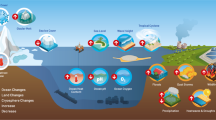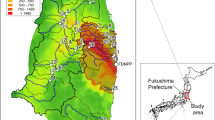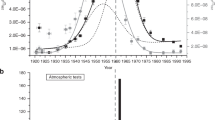Abstract
Some of the waste material discharged into the sea from the Dounreay reactor establishment settles on the nets used by fishermen in the area. The dose rate to their hands is a function of the discharge rate and the local conditions around the fishermen's nets. Equations derived on this basis show a close agreement with findings in the field.
This is a preview of subscription content, access via your institution
Access options
Subscribe to this journal
Receive 51 print issues and online access
$199.00 per year
only $3.90 per issue
Buy this article
- Purchase on Springer Link
- Instant access to full article PDF
Prices may be subject to local taxes which are calculated during checkout
Similar content being viewed by others
References
Environmental Monitoring Associated with Discharges of Radioactive Waste during 1964 from UKAEA Establishments, AHSB(RP) R66 (1965).
Author information
Authors and Affiliations
Rights and permissions
About this article
Cite this article
MORGAN, F. Weather and Discharge Data used to compute Dose Rates from Coastal Discharges of Radioactivity. Nature 215, 474–476 (1967). https://doi.org/10.1038/215474a0
Received:
Published:
Issue Date:
DOI: https://doi.org/10.1038/215474a0
Comments
By submitting a comment you agree to abide by our Terms and Community Guidelines. If you find something abusive or that does not comply with our terms or guidelines please flag it as inappropriate.



